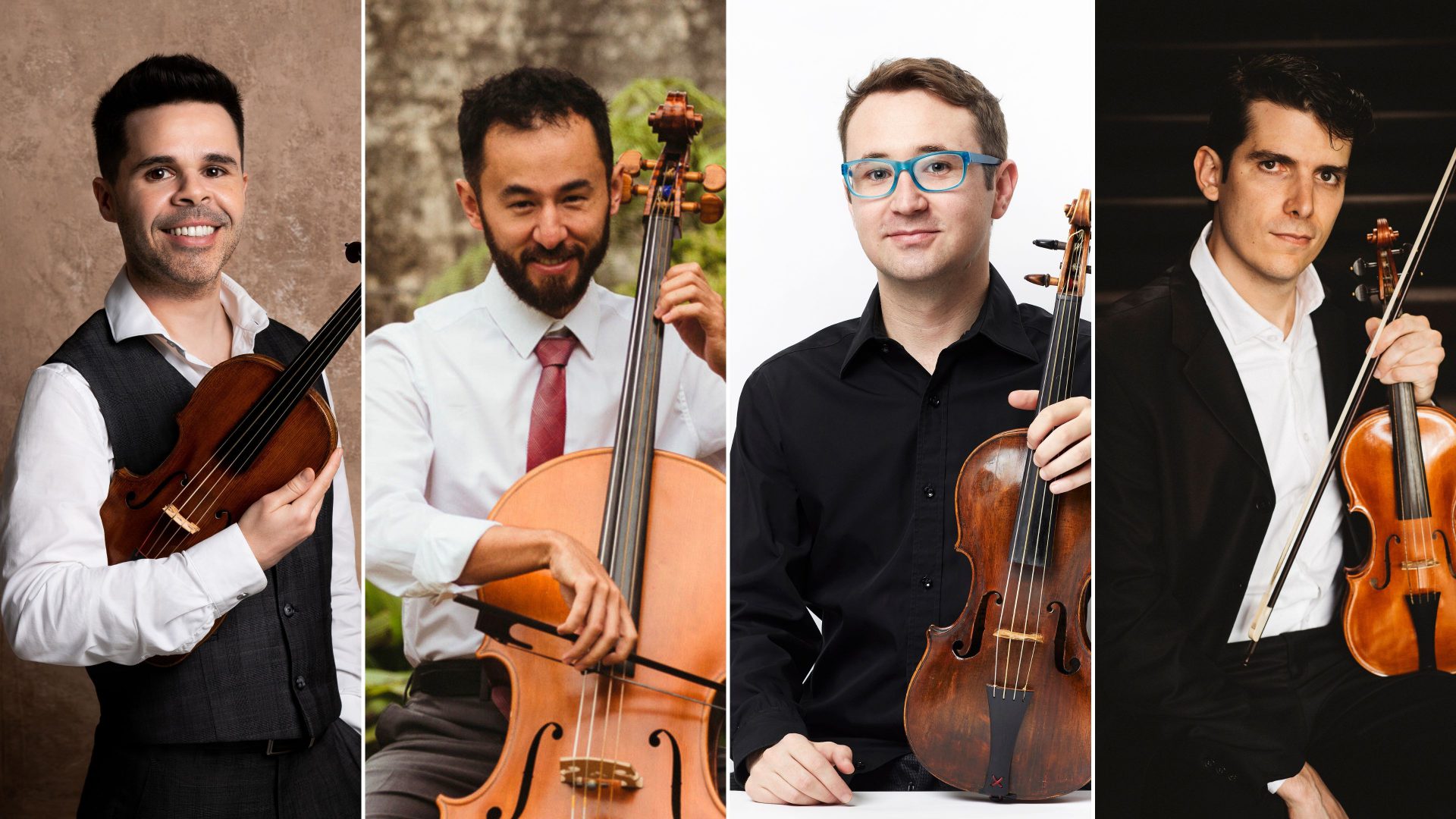The title for this program, Celestial and Romantic Interludes, captures well the variety of musical styles on display. In Mendelssohn we have the Romantic, but in the remaining works, largely from the early 18th century, we glimpse the ideal of harmonia mundi which pervaded the Renaissance and set the scene for the early Baroque. Hence, perhaps, ‘celestial’.
The Muffat Collective appeared this time in its quartet manifestation – the Muffat String Quartet. It was without its resident harpsichordist, Anthony Abouhamad. It was therefore fitting that the concert began with Alessandro Scarlatti’s “Sonata 1 a quattro” in F minor, which is styled “senza cembalo”. A sonata without harpsichord continuo would have sounded unusually bare and sparse to an early Baroque Neapolitan audience, but it seems to have been the first proper string quartet.
It begins with a sombre Grave which develops harmonically as though pacing forward gradually, without hurry but without rest. Matthew Greco emphasises the deliciously Neapolitan dissonances for added dramatic effect. That the stile antico took firm root so early and for so long in Naples can be seen in the second movement, an Allegro, which is really an elaborate and tightly-crafted fugue. It centres on a persistent but simple theme of repeated notes. The final, an Allemande, quotes the fugue in a subtle but noticeable way. The work as a whole is mercurial and the quartet negotiated its saturnine turns in character with ease.
Where Scarlatti’s elaborateness is restrained, Monza’s is more overt. His Quartetto “Gli amanti rivali” (The Rival Lovers) in C major seems to have been written in the early part of the 18th century. But it smacks of the stil galant; we have simple themes exchanged throughout, many sighing motifs, and a rather non-interventionist bass. It is a programmatic work depicting rival lovers contending for a woman’s affections, as can be seen in the quaint descriptions of each movement. In the first, a Largo-Allegro, Rafael Font on viola despatches running passages which are then echoed by Greco on violin as though in contest – hence ‘rivali’. Greco has the movement race abruptly to a finish line.
This is followed by a Recitativo, as though it were a dramma per musica, with the characteristic falling fourths redolent of a declamation. If the first movement were not programmatic enough, the third leaves no doubt about it. Marked “Il duello”, it invokes an image that we see from Romantic Europe, to Republican America, and into the French Belle Epoque – the duelling gentleman vying for honour. It begins triumphantly like a Renaissance battaglia. Each player plays spicatto, only barely striking each string, until the loser lets out his last breath – a faint plucked string.
But we would not be in the soundworld of the Baroque if we did not have a lament. Monza does not disappoint. Anton Baba on cello provides the wavering bass. The harmonic buildup to the dissonances is reminiscent of Pergolesi – simple but effective.
With Matthew Locke we return deep into the early Baroque. This time the English early Baroque. As with Purcell, so with Locke, we see a composer who relishes in jarring dissonances. The first movement of his Consort of four parts, Suite no 1 in D minor is styled “Fantazie”, or what the virginalists would have called a “fancy”. The buildup is incredibly tense, as the voices enter in quick succession. But it was the final movement, a sarabande, that was the highlight. This is the sort of music which this ensembles revels in, and Greco gives a glassy effect to the melody.
Mendelssohn is not so far removed. As Greco reminds us, with his String Quartet in E-flat major “1823” he closes with a fugue. The opening Allegro Moderato is unashamedly Mendelssohn – exquisitely pretty phrases mixed with sudden yearning, but with a genial impression overall. A rapid descending cadence by Greco smiles upon its audience. The second movement, which is by turns darker, gives Greco on violin, and at time Baba on cello, something of an arioso. Each member of the ensemble truly sang. The Minuetto & Trio is jocund and is lightened by a quirky motif that seems almost to giggle.
